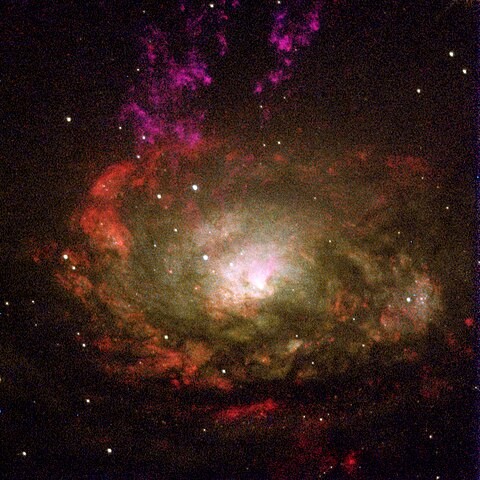Seyfert galaxies are a class of active galaxies known for their bright, compact centers, or nuclei, that emit intense radiation across the electromagnetic spectrum, particularly in the form of visible, ultraviolet, and X-ray light. These galaxies are characterized by the presence of an active galactic nucleus (AGN) powered by a supermassive black hole. Understanding the mysteries of Seyfert galaxies is a challenging and exciting area of astrophysical research. Here are some key aspects and mysteries associated with Seyfert galaxies:
1. AGN Anatomy:
Seyfert galaxies typically have a compact, bright core or nucleus, where the AGN resides. This nucleus is fueled by the accretion of matter onto a supermassive black hole at the galaxy’s center.

2. Emission Mechanism:
One of the primary mysteries of Seyfert galaxies is the exact mechanism responsible for the intense radiation emitted from their cores. This radiation can vary in intensity and wavelength, suggesting a complex and dynamic process.
3. Supermassive Black Holes:
The presence of supermassive black holes at the centers of Seyfert galaxies raises questions about their formation and growth over cosmic time scales. How do these black holes reach such enormous masses, and what role do they play in galaxy evolution?
4. Accretion Disk:
As matter spirals into the supermassive black hole, it forms an accretion disk, which is a flattened, rapidly rotating structure. Understanding the properties of this disk and the mechanisms that lead to radiation emission are ongoing challenges.
5. Jets and Outflows:
Some Seyfert galaxies exhibit powerful jets and outflows of particles and energy from their nuclei. The origins and effects of these outflows on the galaxy’s surroundings are not fully understood.
6. Seyfert Subtypes:
Seyfert galaxies are categorized into Type 1 and Type 2 based on the appearance of their spectra. Type 1 Seyferts show broad emission lines in their spectra, while Type 2 Seyferts show only narrow emission lines. The underlying physical differences between these subtypes are still a subject of investigation.
7. Black Hole Spin:
Determining the spin of supermassive black holes in Seyfert galaxies is a challenging task but a crucial one for understanding their accretion processes and the generation of radiation.
8. Fueling Mechanisms:
What fuels the activity in Seyfert galaxies? How do they obtain the necessary material to feed their central black holes? Gravitational interactions, galaxy mergers, and other mechanisms may be at play.
9. Feedback on Galaxy Evolution:
Seyfert galaxies are thought to play a role in the feedback processes that regulate star formation and galaxy growth. Understanding how AGNs influence their host galaxies is a significant topic in astrophysics.
10. Multiwavelength Observations:
Observations of Seyfert galaxies across different wavelengths, from X-rays to radio waves, are essential for piecing together the complex physical processes occurring in their nuclei.
11. Unification Models:
Unified models attempt to explain the differences between Type 1 and Type 2 Seyferts by invoking viewing angle and obscuration effects. These models are still evolving and subject to refinement.
Studying Seyfert galaxies is not only about unraveling their mysteries but also about gaining insights into fundamental astrophysical processes, such as black hole accretion, relativistic physics, and the interplay between supermassive black holes and their host galaxies. These enigmatic galaxies offer a window into the dynamic and often dramatic phenomena occurring at the centers of galaxies throughout the universe.









